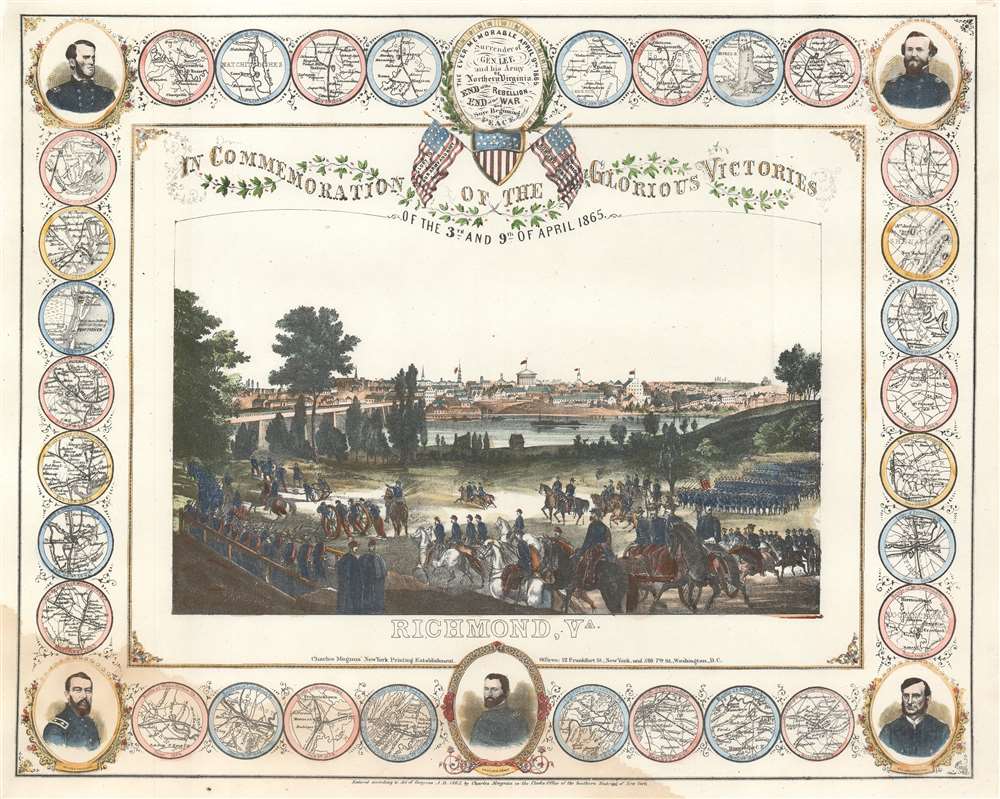This item has been sold, but you can get on the Waitlist to be notified if another example becomes available, or purchase a digital scan.
1865 Magnus Broadside Commemorating the Union Victory in the U.S. Civil War
GloriousVictories-magnus-1865
Title
1865 (dated) 15.5 x 19 in (39.37 x 48.26 cm)
Description
The whole is framed by a series of medallions illustrating Civil War battles and five portraits of Union generals. Lieutenant General Ulysses S. Grant, commander of all Union forces at the end of the war, is prominently featured at bottom center. To his left is Major General Philip Sheridan and to his right, Major General Hugh Kilpatrick. A portrait of Major General William Tecumseh Sherman, known for capturing Atlanta and his March to the Sea, occupies the top left corner while a portrait of Major General George Henry Thomas is situated in the upper right. Between these illustrious commanders are thirty smaller circular medallions highlighting various engagements of the war, including the Capture of Atlanta, the Battle of Five Forks, the siege at Petersburg, Virginia, the Battle of Cold Harbor, the Battle of Spotsylvania Court House, and the surrender at Appomattox.
Publication History and Census
This view was created by Charles Magnus and published in 1865. The OCLC records five examples in institutional collections at the Library of Congress, the Lincoln Memorial University Library, Duke, the Boston Athenaeum, and the William Clements Library at the University of Michigan.Cartographer
Charles Magnus (1826 - 1900) was a New York City based stationer, illustrator, bookseller, and map and print publisher active in the middle to late 19th century. Magnus was born in Elberfeld, Germany, as Julian Carl Magnus. Fleeing the March Revolution in Germany, the Magnus family immigrated to New York City in 1848. In New York, Charles' brother Carl Emil had already established himself as the editor of a German weekly newspaper, Deutsche Schnellpost. It was through his brother that Magnus learnt the printing and publishing trade. The earliest work to bear the Magnus inscription dated to the 1850s and includes various pictorial broadsides and maps intended to commemorate important events - the most notable for map enthusiasts being his 1855 map of New York commemorating the '79th Year of Independence of the United States'. During the 1860s and years of the American Civil War, Magnus, through various political connections, became one of the few illustrators with unrestricted access to Union military camps. He is consequently particularly well known for his authentic view of Civil War cities, personages, and events. Following the war, Magnus began to develop a prosperous business creating and selling panoramic city views, song sheets, and patriotic envelopes. In all Charles Magnus, with over 1000 known works, was one of the most prolific American printers of broadsides and other lithographs. More by this mapmaker...

